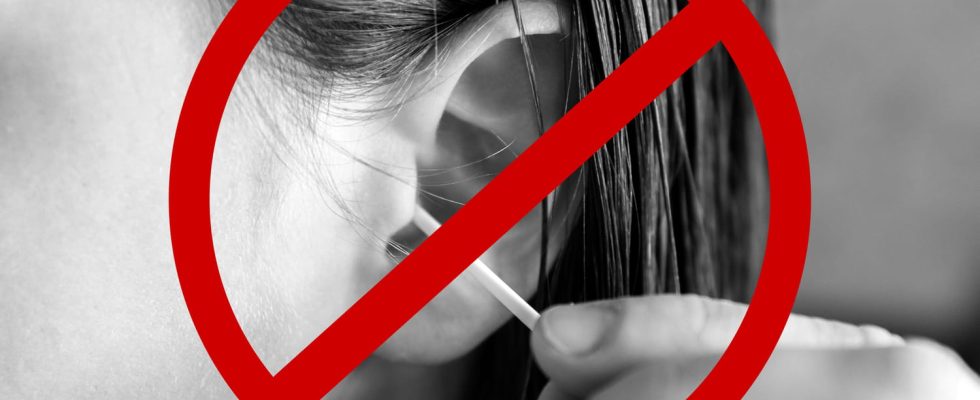For an effective and risk-free ear cleaning, the cotton swab is to be banned! Instead, try a simple technique recommended by our ENT doctor.
To clean the ears correctly and safely, we ban the cotton swabAt risk of causing irritations, earwax plugs or even eardrum injuries. Indeed, its size, its shape and its texture make it tend to repel earwax and pack it at the bottom of the ear canal. In place, we prefer a technique, very simple and recommended by Dr. Jean-Michel Klein, ENT and President of the National Professional Council for ENT and Cervico-Facial Surgery:
- Clean the entrance to the ear canal with a small curette (tool has a 2-3mm wide rounded tip, much like a teaspoon: see image to the right) to loosen and recover oxidized earwax. “Be careful not to go too deep and not to make sudden movements when inserting the tool into the ear: this could damage the eardrum or the skin“, insists our expert.
- Clean the auricle (visible part of the ear) with the furrows and the conch (the shape of the shell where the duct begins) using your (clean) little finger and a damp tissue. Make gentle movements from the inside out to recover impurities and dead skin.
- If water got into the ear while showeringthe entrance to the ear canal should be wiped with a clean towel or dry handkerchief. “During the summer holidays, at the sea or the swimming pool, the auditory canal tends to be wetter. Remember to dry your ears after swimming with a hair dryer (at low power so as not to burn yourself)“, advises the ENT doctor.
How often do you clean your ears?
We must clean the entrance of the ears “every 10 to 15 days max, no more“, advises Dr. Klein. This is more than enough.
When to go to the ENT to clean your ears?
In the vast majority of people, a self-cleaning of the ears is enough to remove oxidized earwax. But for some people, this cleaning is not enough (because of several reasons, for example: presence of hair in the auditory canal, too narrow external auditory canal, wearing hearing aids or earplugs, elderly people whose earwax is dry…) and they should consult their doctor for help in removing earwax deposits and avoid complications. When the general practitioner is unable to remove a cork, he sends his patient to see an ENT doctor. To remove the cork, the ENT doctor can use several tools or devices: mini-aspirator with fine cannulas, handles, curettes, hooks, cotton swabs or micro-tweezers depending on the texture of the plug and its location in the duct. These treatments are carried out under “consultation microscope” to have good visual control.
Thanks to Dr Jean-Michel Klein, ENT and President of the National Professional Council of ENT and CCF (Cervico-Facial Surgery) (CNP ENT and CCF)
